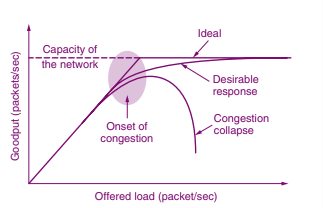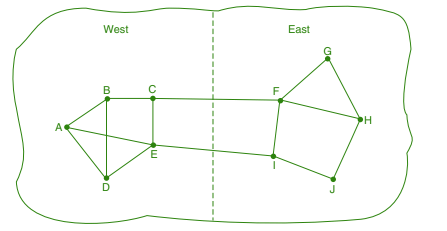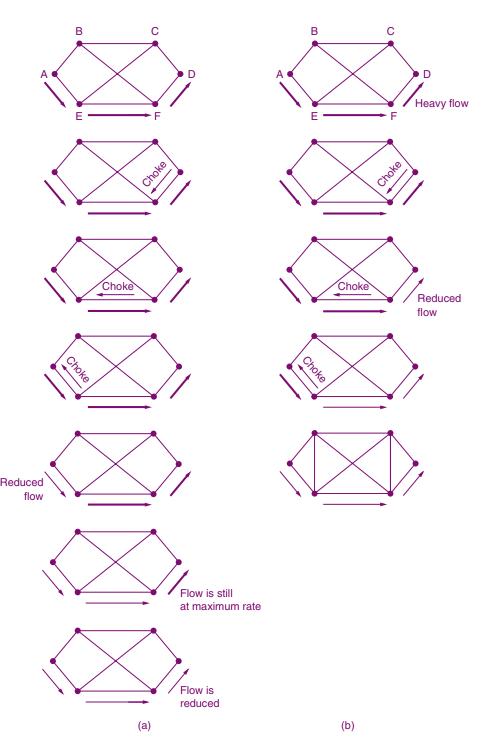Understanding Congestion Control Algorithms in Networking
In computer networks, congestion occurs when too many packets are present in a part of the network, leading to delays and packet loss that degrade overall performance. Effective congestion control is crucial for maintaining the efficiency and reliability of data transmission. This article explores the various congestion control algorithms, their mechanisms, and their importance in network management.
What is Congestion?
Congestion arises when the demand for network resources exceeds the available capacity. As the number of packets sent into the network approaches its carrying capacity, the likelihood of packet loss increases. This situation can lead to a congestion collapse, where performance deteriorates sharply as the offered load surpasses the network’s ability to handle it.

Key Indicators of Congestion
→ Packet Delay: Increased waiting times for packets to be transmitted.
→ Packet Loss: Discarded packets due to buffer overflow in routers.
→ Goodput: The rate at which useful packets are successfully delivered, which decreases during congestion.
The Role of Network and Transport Layers
Both the network and transport layers share the responsibility for managing congestion. While the network layer directly experiences congestion and must determine how to handle excess packets, the transport layer can help alleviate congestion by reducing the load it places on the network. Effective collaboration between these layers is essential for optimal congestion control.
Approaches to Congestion Control

Congestion control strategies can be categorized into two main approaches: preventative and reactive.
Preventative Approaches
These strategies aim to avoid congestion before it occurs:
→ Traffic-Aware Routing: Adjusting routing paths based on current traffic conditions to prevent hotspots from forming.
→ Network Provisioning: Upgrading network resources based on long-term traffic trends to accommodate expected loads.
→ Admission Control: Refusing new connections if they would lead to congestion, ensuring that the network remains within its capacity.
Reactive Approaches
When congestion has already set in, reactive strategies come into play:
→ Traffic Throttling: Reducing the transmission rate of senders when congestion is detected. This can be achieved through feedback mechanisms that inform senders to slow down.
→ Load Shedding: Discarding packets when the network is overwhelmed. This method requires intelligent policies to determine which packets to drop based on their importance.
Key Congestion Control Algorithms
1.Traffic-Aware Routing
Traffic-aware routing adjusts link weights based on current load conditions, allowing the network to shift traffic away from congested paths. This method helps distribute traffic more evenly across the network, reducing the likelihood of congestion.

2.Admission Control
In virtual-circuit networks, admission control prevents new connections from being established if they would exceed the network’s capacity. This proactive measure helps maintain network stability and performance.
3.Traffic Throttling
When congestion is imminent, routers can send feedback to senders, instructing them to reduce their transmission rates. This feedback can be delivered through various mechanisms, including:
→ Choke Packets: Direct notifications sent back to the source to reduce traffic.
→ Explicit Congestion Notification (ECN): A method where routers mark packets to indicate congestion, allowing the destination to inform the sender to throttle its transmissions.

4. Load Shedding
When congestion cannot be alleviated through other means, routers may resort to load shedding, which involves discarding packets. The decision on which packets to drop can depend on the type of application, with different strategies for real-time media versus file transfers.

5.Random Early Detection (RED)
RED is a proactive load shedding technique that discards packets before the buffer is full. By monitoring average queue lengths, routers can randomly drop packets when congestion is detected, allowing senders to react before the situation worsens.
Conclusion
Congestion control algorithms are vital for ensuring the efficient operation of computer networks. By implementing a combination of preventative and reactive strategies, networks can effectively manage traffic loads, minimize delays, and reduce packet loss. Understanding these algorithms is essential for network engineers and administrators as they work to maintain optimal performance and reliability in their systems. Through effective congestion control, networks can provide a seamless experience for users, even during peak traffic periods. # Understanding Conggestion Control Algorithms in Networking.
